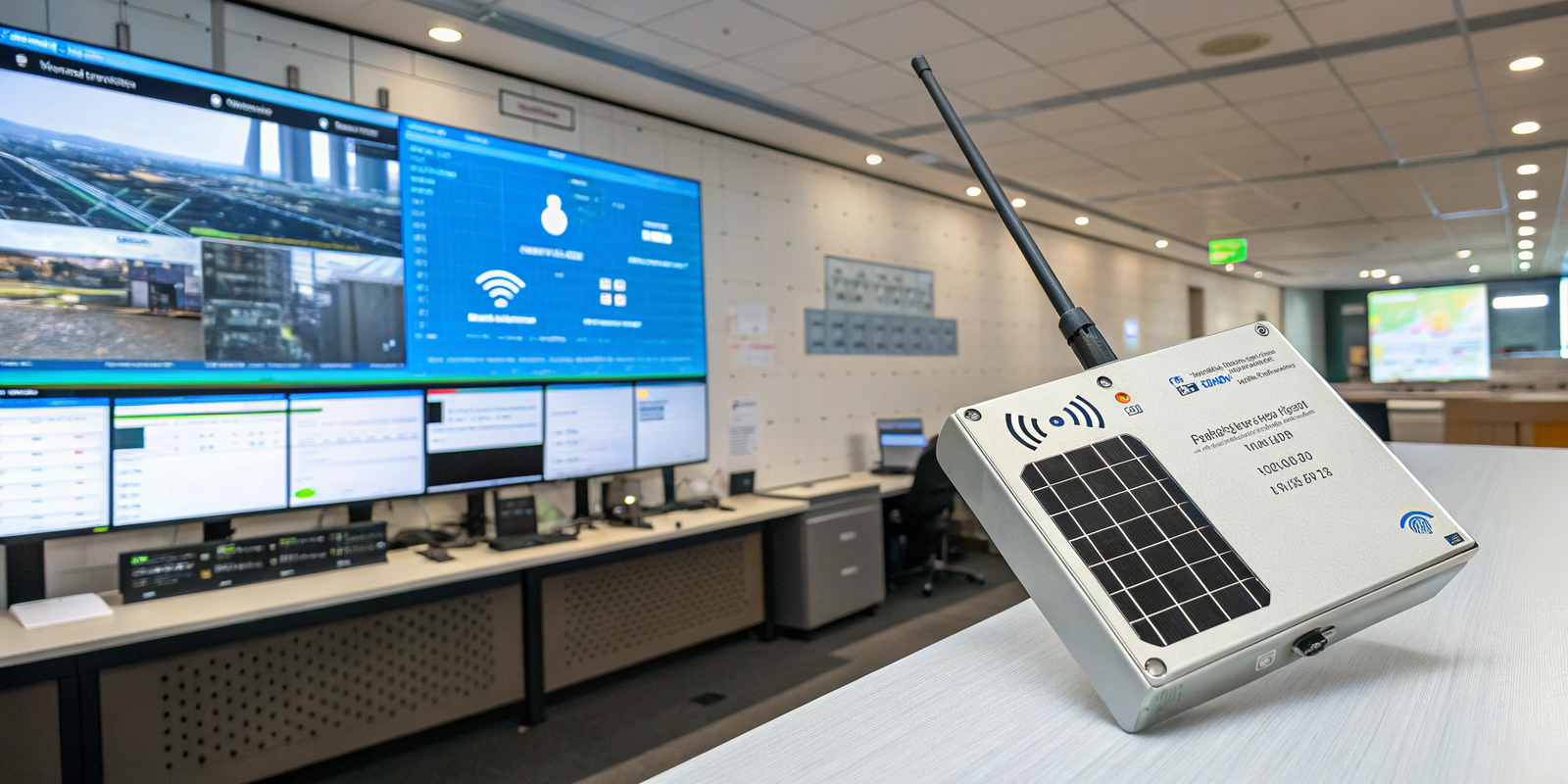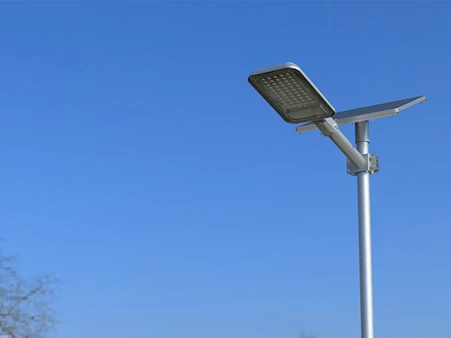Struggling to understand what makes a solar street light “smart”? You’re not alone — many buyers are confused by tech jargon.
A smart solar street light uses built-in sensors, controllers, and sometimes wireless communication to automatically adjust brightness, optimize energy use, and report performance in real time — all without manual input.
Solar lights aren’t just about panels and batteries anymore. The brain behind the brightness is what truly matters. Let me show you how it all fits together.
What Makes a Solar Street Light Smart?
Smart solar lighting sounds high-tech, but the idea is simple: let the system think for itself.
A smart solar street light includes a controller, sensors, and sometimes wireless communication. These work together to control lighting behavior, save energy, and report performance.
When someone passes by, it brightens. When no one’s there, it dims. And if there’s a problem? It tells you.
Key Features That Make It Smart
| Feature | Function |
|---|---|
| Light Sensor | Automatically turns light on at dusk and off at dawn |
| Motion Sensor | Detects movement and increases brightness temporarily |
| Smart Controller | Manages lighting schedule, energy use, and sensor inputs |
| Communication Module | Sends data remotely for monitoring and diagnostics |
| BMS (Battery System) | Optimizes charging/discharging to extend battery life |
These work together so you don’t need a technician adjusting lights every week.
The Core Components of a Smart Solar Street Light?

Solar lights all have the same basic parts. The smart ones just add intelligence to those parts.
A smart solar street light contains a solar panel, LiFePO4 battery, LED lamp, smart controller, motion/light sensors, and optionally a communication module.
Let me break each of them down for you.
🔋 Core Components Table
| Component | Role |
|---|---|
| Solar Panel | Converts sunlight to energy |
| LiFePO4 Battery | Stores energy safely, with longer lifespan |
| LED Lamp | Provides efficient, bright lighting |
| Smart Controller | The "brain" managing charging, lighting schedules, and sensors |
| Light Sensor | Detects ambient light levels, triggers light on/off automatically |
| Motion Sensor | Detects movement, triggers brightness boost |
| GSM/LoRa Module | Enables remote control or monitoring via wireless communication |
Each part must work seamlessly. But it’s the controller and sensors that make them smart.
How the Smart System Works—Step-by-Step?
Knowing how it works will help you understand its value — and where your money is going.
The system charges during the day and automatically adjusts brightness at night based on light and motion detection. Remote communication lets you monitor everything in real-time.
Here’s how the whole cycle plays out:
🌞 Daytime Operation
- Solar panel absorbs sunlight
- Energy is stored in the LiFePO4 battery
- MPPT controller optimizes power conversion
- BMS prevents overcharging and overheating
🌙 Nighttime Operation
- Light sensor detects dusk → LED light turns on
- Motion sensor detects movement → brightness increases
- No movement? → Light dims to energy-saving mode
- Battery management ensures optimal power draw
📡 Remote Access Anytime (If Equipped)
- GSM/LoRa/WiFi modules send system updates
- View battery status, lighting data, or errors on dashboard or app
- Configure lighting schedules remotely
All of this happens automatically. Once installed, the system does all the thinking.
What Are the Benefits of Smart Solar Street Lights?

Traditional solar lights get the job done, but smart ones do it better—and for longer.
Smart solar street lights offer better energy efficiency, longer lifespan, lower maintenance, and remote control — all of which save money over time.
Let’s look at the key advantages:
🔍 Major Benefits Overview
| Benefit | Description |
|---|---|
| Energy Efficiency | Motion-based dimming reduces unnecessary consumption |
| Extended Runtime | Smart control balances usage to stretch battery life |
| Low Maintenance | System alerts you before problems become failures |
| Adaptive Lighting | Brightness adjusts based on real-world usage |
| Remote Control | Check and manage your lights from anywhere |
| Long-Term Savings | Less repair, better efficiency, fewer replacements |
You’re not just buying lights—you’re investing in performance.
Smart vs Traditional Solar Street Lights?
A common question I hear: “Are smart lights really worth the extra cost?”
Compared to traditional models, smart solar lights provide automation, adaptability, and energy savings — with far less need for manual intervention.
Here’s how they compare side-by-side:
⚖️ Feature Comparison Table
| Feature | Smart Solar Light | Traditional Solar Light |
|---|---|---|
| Automation | Yes (sensor-driven) | Basic dusk-to-dawn |
| Motion Detection | Yes | No |
| Remote Monitoring | Yes (with communication) | No |
| Efficiency | High (adaptive brightness) | Medium (static consumption) |
| Cost | Higher upfront | Lower upfront |
| ROI | High (saves long-term) | Lower (more maintenance) |
Yes, it costs more to start. But in two or three years, the savings and reliability often make up for it.
What Smart Features Should You Look For?

Not all smart systems are equal — choose carefully.
Look for an MPPT controller, motion/light sensors, wireless communication, and mobile integration to get the most value from your smart light.
Here are the key features I always recommend:
✅ Must-Have Smart Features
| Feature | Why It Matters |
|---|---|
| MPPT Controller | Boosts power conversion by 20–30% |
| Light + Motion Sensors | Enables full automation and energy efficiency |
| Adjustable Schedules | Tailor light behavior to specific timeframes |
| Mobile App Integration | Control and monitor remotely via phone or PC |
| Battery Management System | Protects battery from overuse or failure |
| Theft Detection | Sends alerts if pole or battery is tampered |
| Remote Diagnostics | Detects faults before they cause blackouts |
These features aren’t luxury—they’re essential for long-term reliability and low O&M costs.
Is a Smart Solar Street Light Right for You?
This is where many of my clients get stuck — is smart worth it for their project?
Smart solar street lights are ideal for municipalities, campuses, or any project where energy efficiency, reliability, or low maintenance is a priority.
If you operate in:
- Urban streets that need adaptive lighting
- Rural areas where maintenance teams are limited
- Industrial parks that need robust, efficient lighting
- Off-grid zones where reliability is critical
…then smart solar lights are the smart choice.
If you're just lighting a backyard, traditional may be enough. But for serious infrastructure? Smart pays off.
Conclusion
Smart solar street lights combine automation, energy savings, and real-time control. They’re more than just lights—they’re a system built for efficiency and longevity. If you want reliability with lower long-term cost, smart is the way forward.







